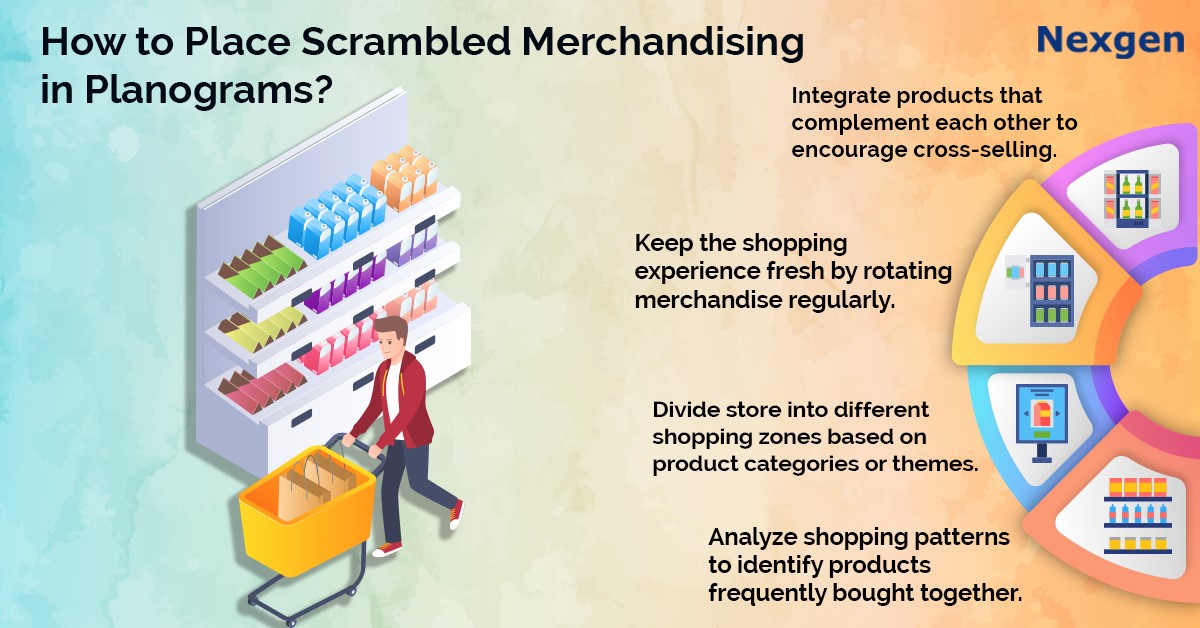Scrambled merchandising, also known as scrambled assortment, refers to a retail strategy where a retailer broadens its inventory by placing items unrelated to its prime product lines. Imagine a drugstore that sells candy, cosmetics, or magazines using a scrambled merchandise strategy. The goal is to create an engaging shopping experience by surprising and enticing customers, encouraging exploration, and boosting sales. This approach is particularly effective in attracting the attention of today's easily distracted consumers. For example, a contemporary bicycle shop that offers conventional retail models. In addition to offering an extensive selection of bicycles, it could diversify its offerings by placing a range of biking accessories, eco-friendly gear, and personalized bike customization services. Going beyond the traditional retail strategy, this might also become a community hub for cycling enthusiasts, hosting regular maintenance workshops, group rides, and even featuring rotating pop-up sections displaying innovative bike-related products or environmentally conscious brands. This blog will explore the concept of scrambled merchandising and provide a step-by-step guide on how to seamlessly incorporate it into your visual merchandising planogram to drive sales:

- Know your audience: Before diving into scrambled merchandising, understand your target audience. Consider their preferences, shopping behavior, and the type of products they are likely to be interested in. During winter, for instance, a warm winter coat might be displayed next to stylish boots, scarves, and even summer dresses. This helps customers envision complete outfits for different occasions. This knowledge will guide you in creating a shelf planning software, such as planograms that resonates with your customers.
- Identify key products: Select key products or categories that you want to highlight through Scrambled Merchandising. These could be new arrivals, seasonal items, or high-margin products. Ensure that these products have a strong visual appeal to attract attention when scattered throughout the store.
- Create shopping zones: Divide your store into different shopping zones based on product categories or themes. Within each zone, apply scrambled merchandising to create a sense of excitement and discovery. For example, mix clothing items with accessories in the fashion zone, or combine kitchen appliances with cookware in the home goods section.
- Consider complementary pairings: Integrate products that complement each other to encourage cross-selling. For instance, if a customer is browsing through electronics, strategically place tech accessories nearby. Create sections that feature complementary items from various brands, allowing customers to explore different designer aesthetics in one place. This cross-merchandising strategy can lead to increased basket size and customer satisfaction.
- Rotate merchandise regularly: Keep the shopping experience fresh by regularly rotating the placement of scrambled merchandising elements. Consider arranging items by color. This creates visually appealing sections that catch the customer's eye and encourages them to mix and match items based on color coordination. This ensures that repeat customers find something new and interesting during each visit, fostering a sense of excitement and anticipation.
- Implement technology: Leverage technology to analyze customer behavior and optimize your Scrambled Merchandising strategy. Use data analytics tools to track which placements are more effective and adjust your planogram accordingly. This data-driven approach ensures continuous improvement and adaptability to changing consumer trends.
Overview of Nexgen POG
Nexgen POG is a robust and user-friendly cloud-based visual merchandising tool. It is designed for quick and efficient planogramming with minimal effort. Planogram in retail can be designed by easily dragging and dropping the products. The multi-device compatibility feature of POG allows you to obtain, share and edit planogram on any device, including your phone. It helps in designing store-specific planograms for increased product visibility and sales.
Get Your Free Trial Now!